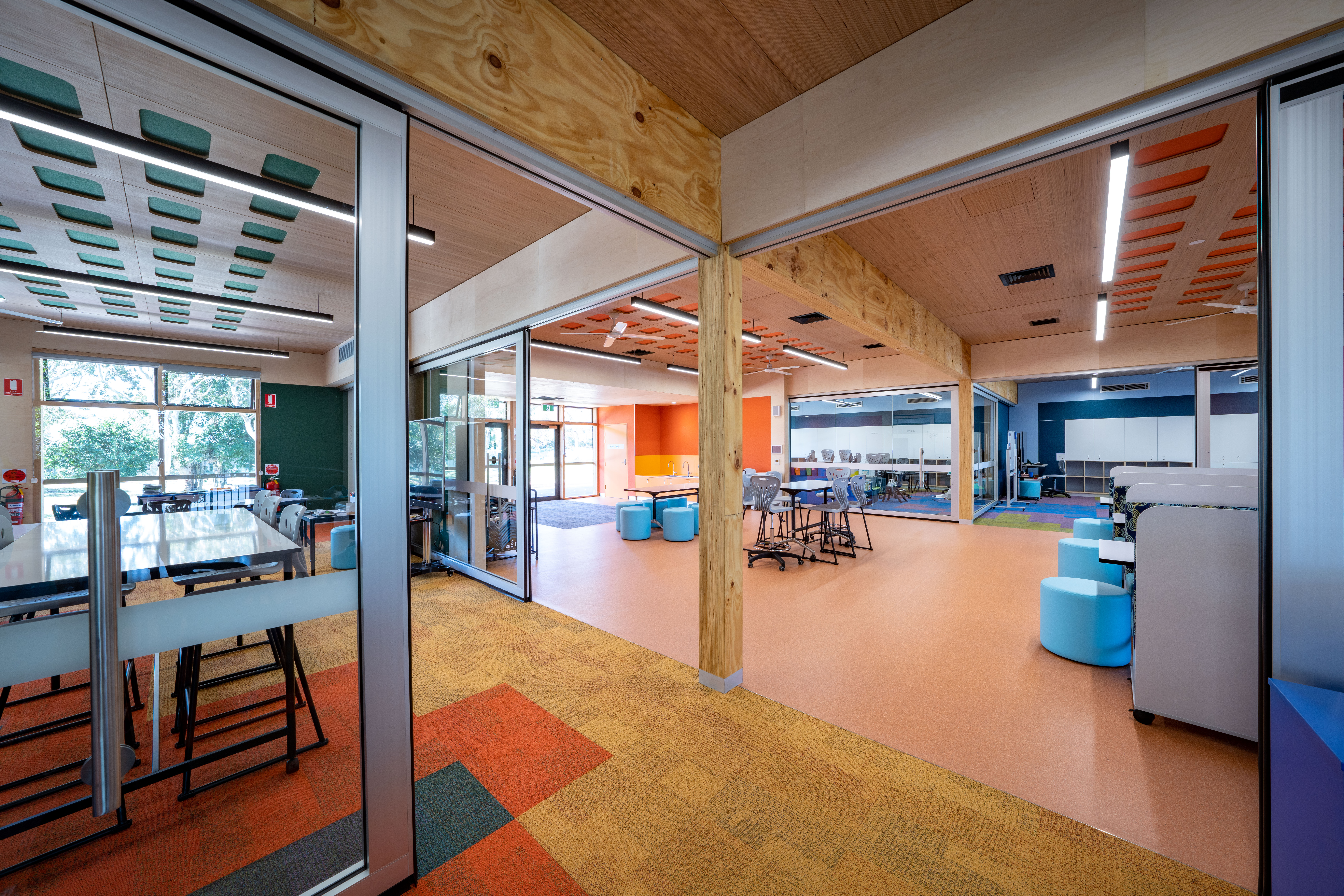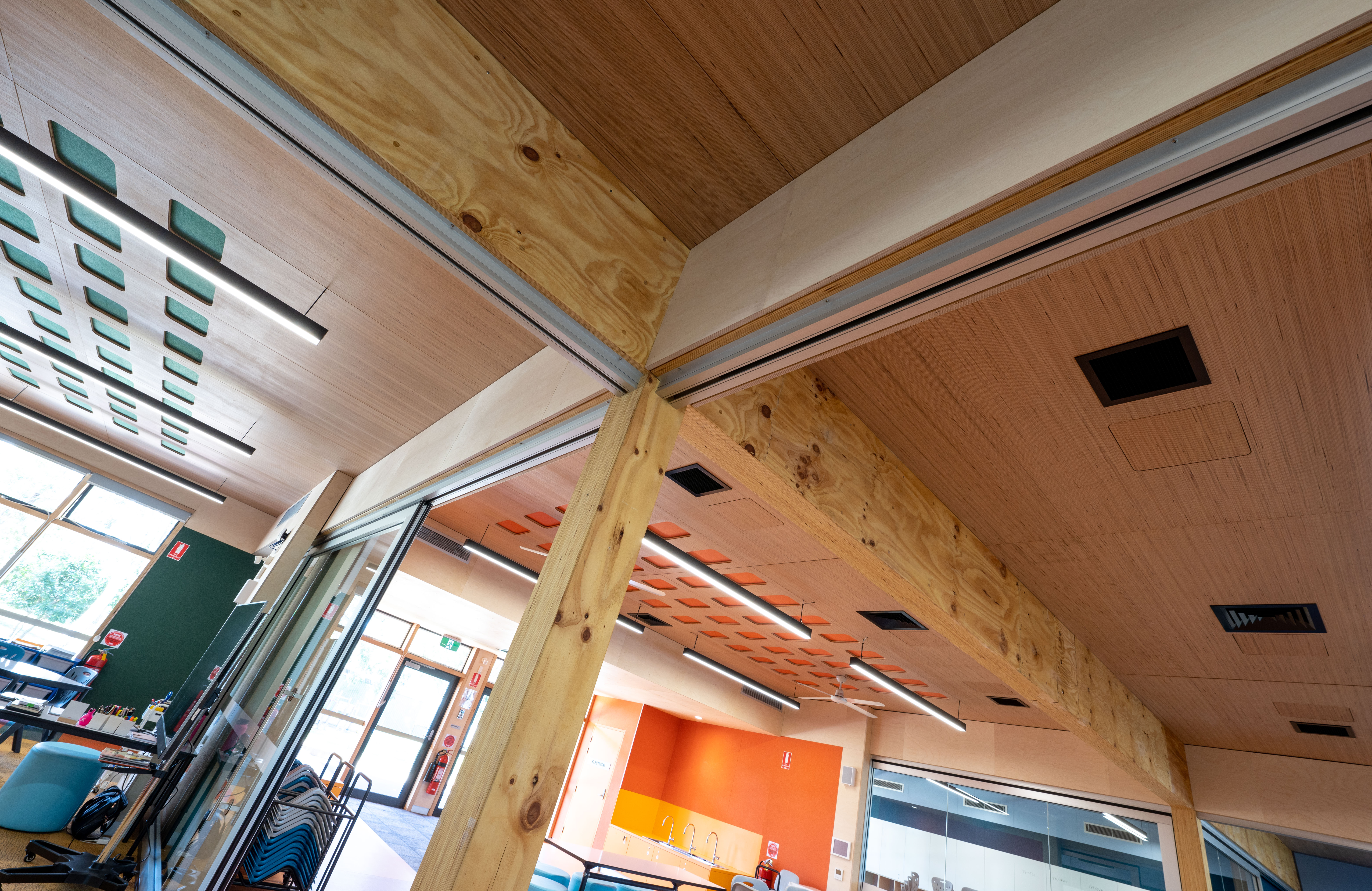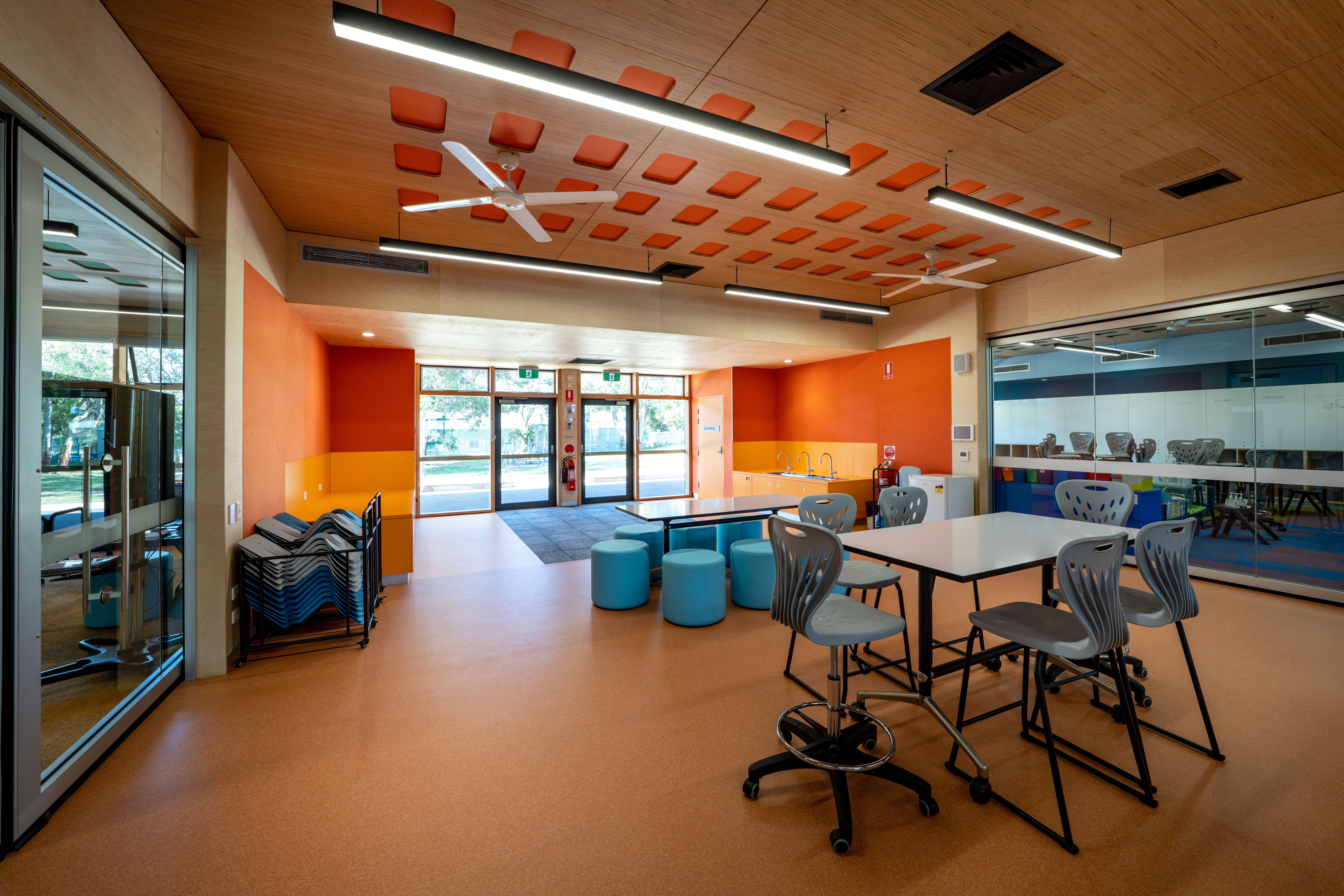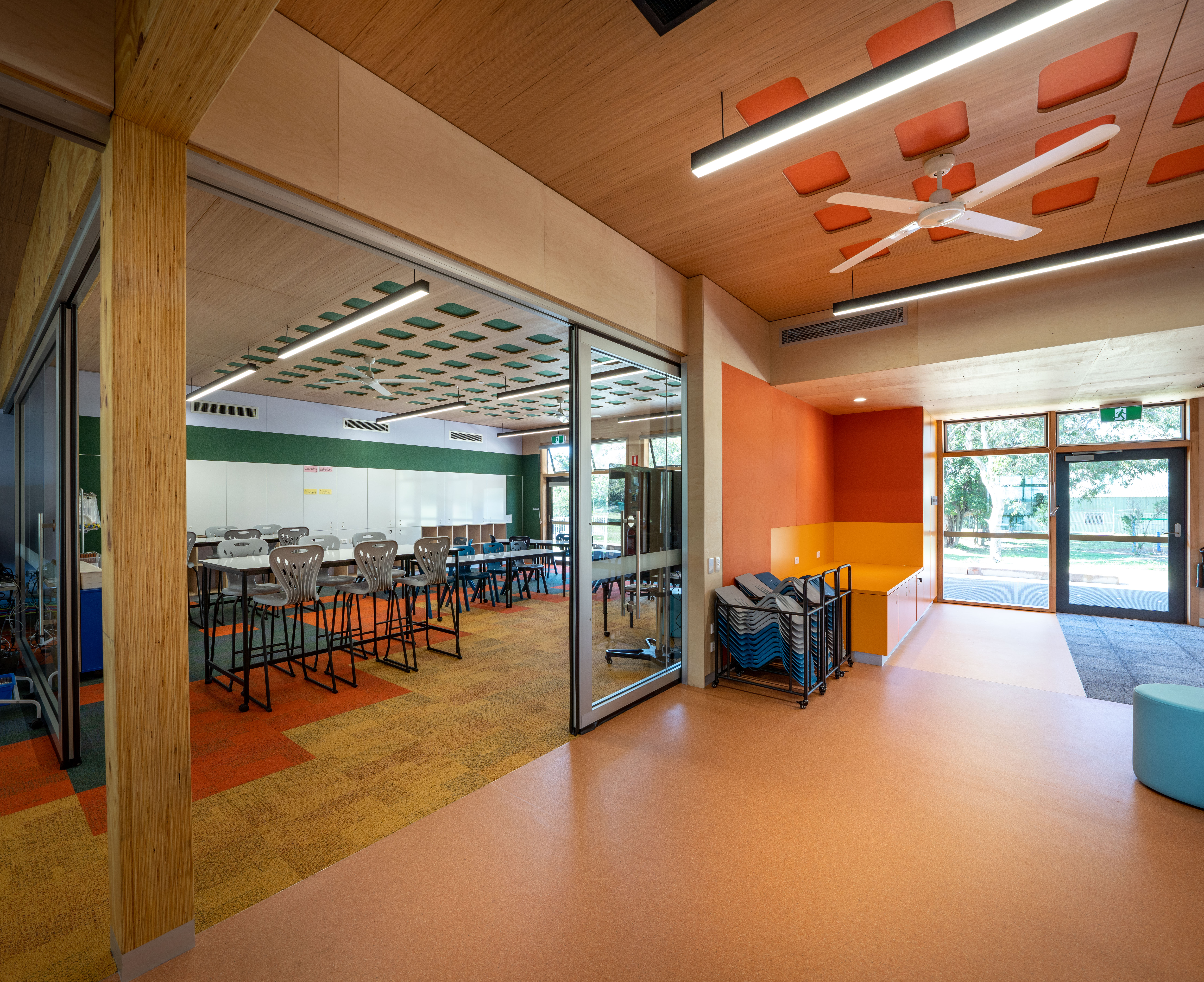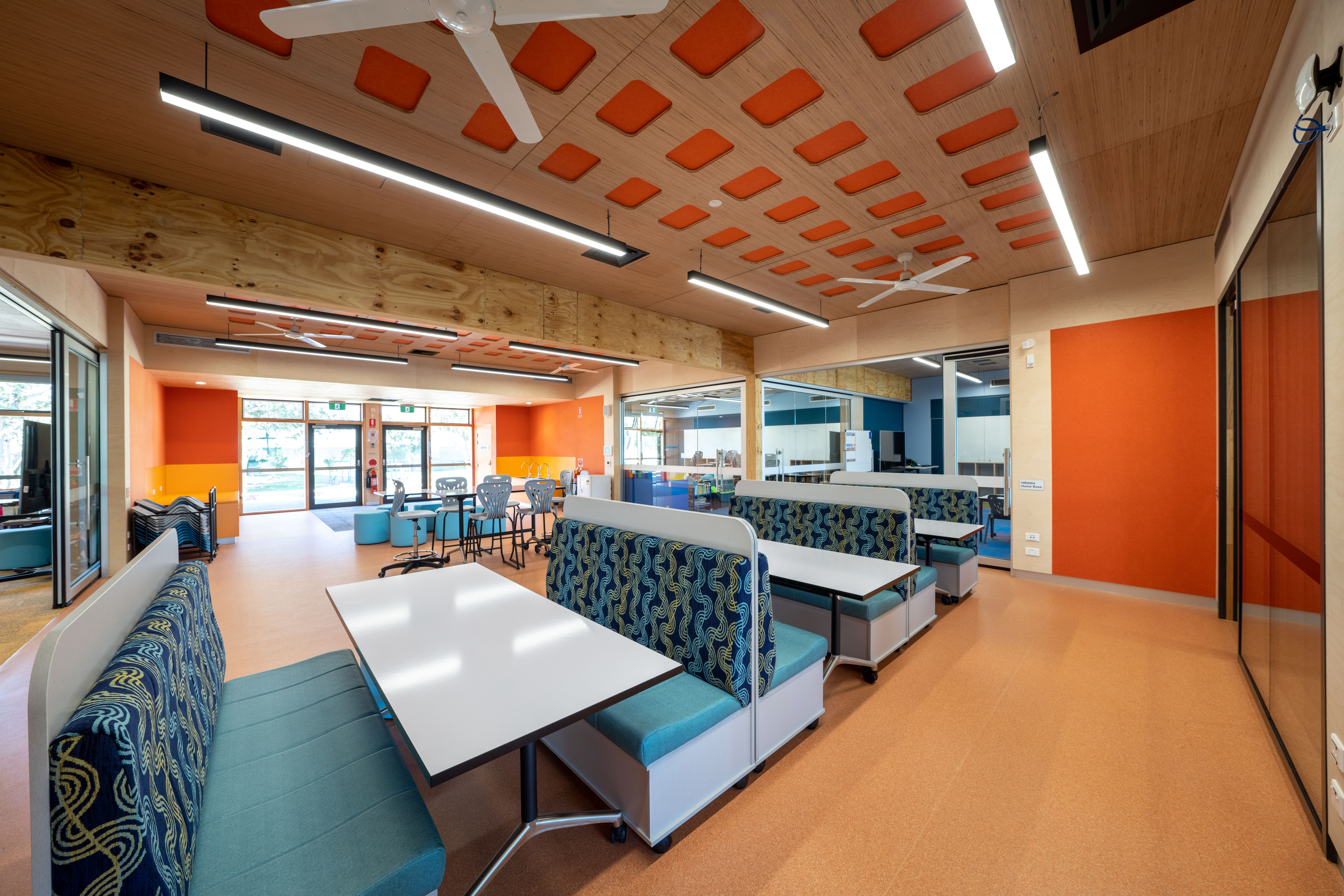The Learning Hub has delivered four home bases, an activities area, a quiet room and an undercover area. The building allows teachers to co-teach and use engaging teaching practices.
The Fern Bay project follows on from our successful engagement with SINSW to develop their Design for Manufacture and Assembly (DfMA) Guidelines.
The structure was designed using DfMA principles and consisted of steel screw piles, pre-fabricated floor cassettes made of timber joists and bearers, prefabricated timber stud wall framing, and roof cassettes assembled using roof trusses. All elements were all transported and fixed together on site.
One of the main complexities in assembling prefabricated elements is determining the correct connection methodology that allows for the maximum amount of pre-assembly, including finishes, while also ensuring structural performance and minimizing installation time. TTW’s extensive experience in DfMA allowed us to tackle this challenge head-on and develop effective connection solutions.
This project was the first of its kind for educational infrastructure within Australia and led to TTW being engaged by the School Infrastructure NSW (SINSW) to develop their Design for Manufacture and Assembly (DfMA) Guidelines for standardising the design of schools across New South Wales. We also provided structural engineering input into a standard design for a Kit-of-Parts (KoP) and Modern Methods of Construction (MMC) approach.
The template design enabled SINSW to roll out a range of different projects across the state, using the KoP and MMC approach, ensuring consistency of design, while achieving cost and time efficiencies.
